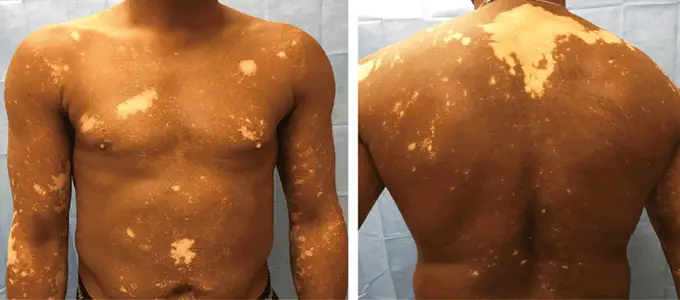Confetti Pigmentation
Medical Definition and Introduction

|
Confetti-like hypomelanosis or confetti depigmentation usually refers to small, 1–3 mm hypopigmented macules. It may results from a localized alteration in melanin production, melanin transfer or destruction of melanocytes. |
Many disorders cause confetti-like hypomelanosis including tuberous sclerosis Opens in new window, morphea, mycosis fungoides, chemicals like hydroquinone and its monobenzyl ether, idiopathic guttate hypomelanosis Opens in new window, systemic sclerosis and of course vitiligo Opens in new window.
Contact leukomelanosis in confetti-like pattern has been reported following application of steamed betel leaves. Grover’s disease, Darrier’s disease, pityriasis versicolor and melanoma can also cause confetti-like hypomelanosis.
Mimicks of confetti hypomelanosis include stucco keratosis, lichen sclerosus et atrophicus and verrucae planae juveniles.
Leukoderma punctatum is another such condition having confetti hypopigmentation and was first described by Falabella. It commonly occurs in women being treated with 8-methoxypsoralen and sun exposure, though it has also been reported with light chamber ultraviolet A (UV-A) and topical psoralen ultraviolet A (PUVA).
See also:
- Markey AC, Black AK, Rycroft RJG. Confetti-like depigmentation from hydroquinone. Contact Dermatitis. 1989;20:148-9.

